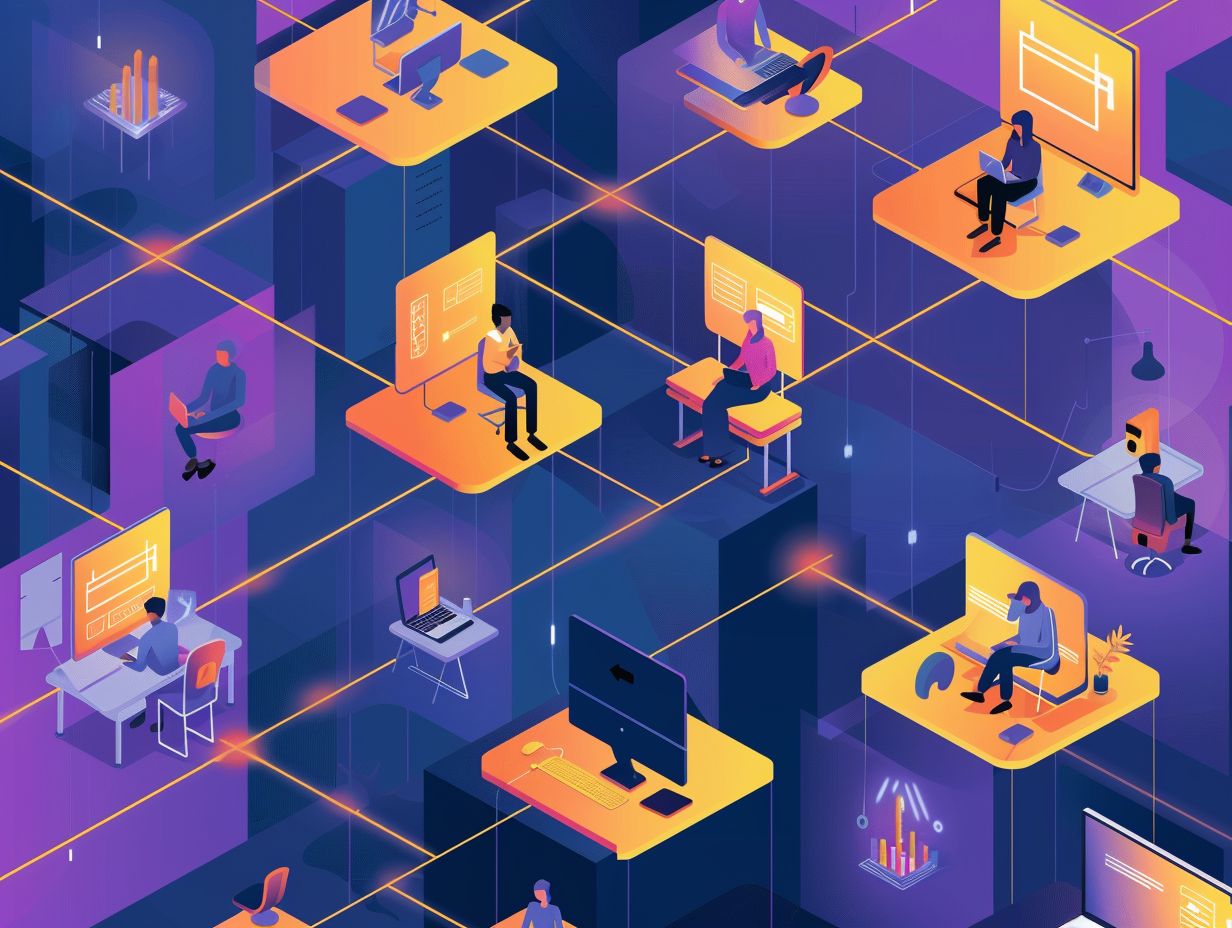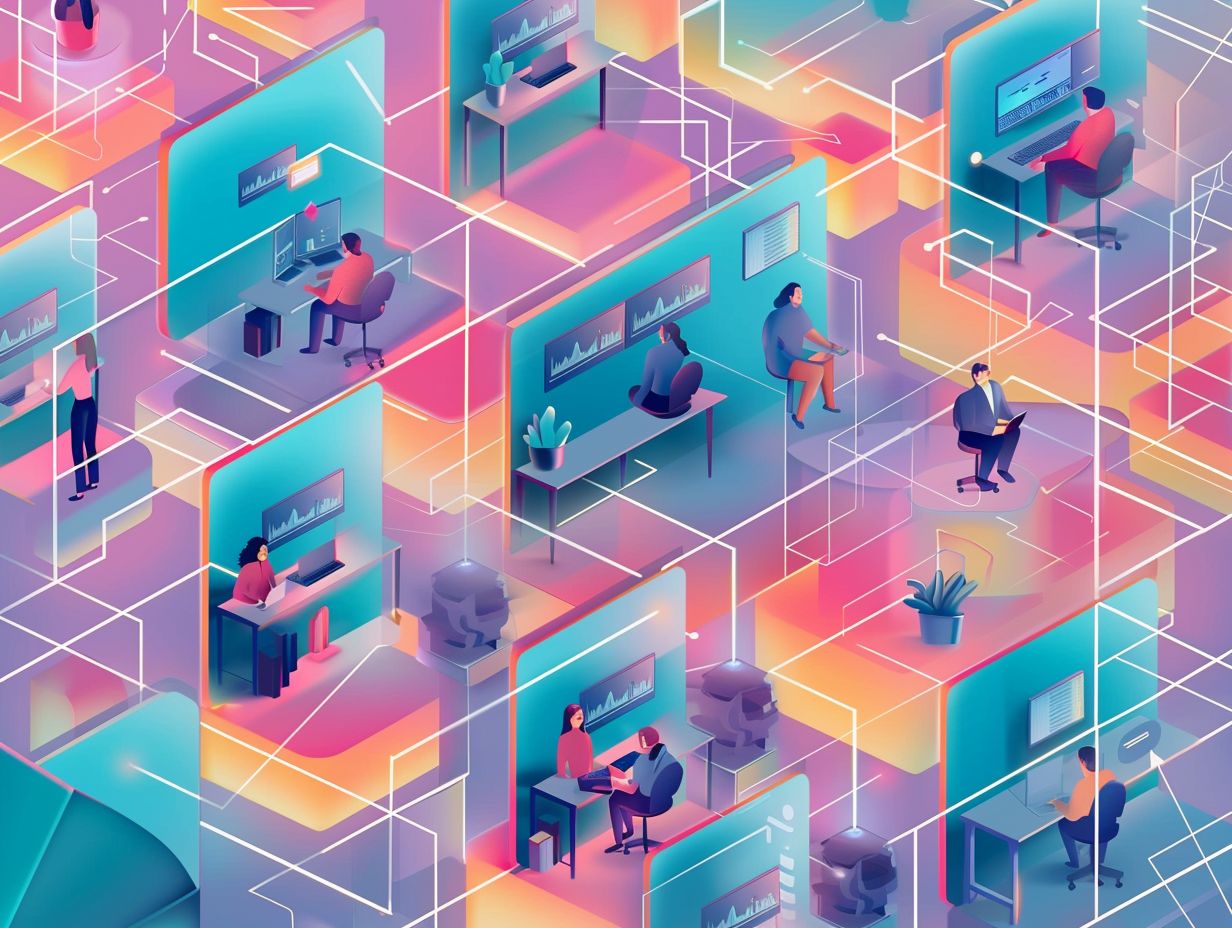The Role of XDR in Securing Remote Workforces

As remote work becomes more common, you must prioritize advanced cybersecurity measures to ensure the security of your organization. The concept of XDR – Extended Detection and Response – plays a crucial role in protecting remote workforces. You need to familiarize yourself with the fundamentals of XDR and address the challenges and vulnerabilities present in remote work setups.
By understanding the benefits, adhering to best practices, and examining real-world case studies of XDR implementation, you can enhance the security of your remote workforce. It is essential to stay informed about the future of XDR and its implications for remote workforces in the constantly evolving digital landscape.
Key Takeaways:

Understanding XDR
Understanding XDR is crucial in the realm of cybersecurity and threat detection. XDR, which stands for Extended Detection and Response, is an advanced security solution that offers comprehensive protection by integrating multiple security components into a unified platform.
By combining capabilities of Endpoint Detection and Response (EDR), Security Information and Event Management (SIEM), and Managed Detection and Response (MDR), XDR enhances your ability to identify, investigate, and remediate threats across various endpoints and networks.
Unlike traditional security solutions that may operate in silos, XDR provides a holistic view of your organization’s security posture, enabling faster threat detection and more effective incident response. This integrated approach helps organizations stay ahead of sophisticated cyber threats and adapt to evolving security challenges.
What is XDR?
XDR, also known as Extended Detection and Response, is a comprehensive security solution that integrates and correlates threat intelligence and data across various security layers such as EDR, SIEM, and MDR.
By integrating EDR (Endpoint Detection and Response), SIEM (Security Information and Event Management), and MDR (Managed Detection and Response), XDR offers a holistic approach to threat detection. It provides organizations with a unified view of their security posture, enabling them to detect and respond to threats more efficiently. XDR combines the strengths of these individual security tools, allowing for seamless data sharing and correlation. This correlation assists in identifying advanced threats that may go undetected by standalone tools, thereby enhancing overall cybersecurity defenses.
The Need for XDR in Remote Workforces
The need for XDR in remote workforces has become paramount in today’s digital landscape. As organizations increasingly shift to remote work setups, the vulnerabilities and security challenges have also evolved, highlighting the necessity of robust security measures.
When employees access company networks from various locations, devices, and networks, they pose a significant risk to data security. Cyberattacks, such as phishing and malware, have become more sophisticated, targeting remote workers who may not have the same level of protection as in-office environments.
XDR plays a crucial role in monitoring all endpoints, networks, and clouds, providing real-time detection and response capabilities to potential threats. By consolidating security tools and centralizing threat detection, XDR enhances visibility across distributed environments and enhances data protection measures.
Challenges and Vulnerabilities in Remote Work
In remote work environments, you face unique challenges and vulnerabilities that traditional security measures may struggle to address. The dispersed nature of remote teams, increased reliance on cloud services such as Google Workspace, and potential risks associated with endpoints all contribute to the necessity for advanced security solutions like XDR.
One primary concern for remote workforces is the heightened risk of data breaches, particularly as employees access corporate networks from various locations. The absence of physical security measures typically found in a centralized office environment can leave confidential data more exposed to unauthorized access. Endpoint security vulnerabilities may arise as devices are used beyond the confines of the secure company network, rendering them susceptible to malware and other cyber threats.
XDR, with its capability to correlate data across multiple security layers, can effectively identify and respond to these evolving threats in real-time, offering comprehensive protection for remote work settings.
Benefits of XDR for Remote Workforces

The benefits of XDR for remote workforces are multifaceted, offering enhanced threat detection capabilities, improved visibility into security incidents, and proactive response mechanisms. XDR give the power tos organizations like yours to safeguard their distributed workforce effectively.
By consolidating data from various security tools across endpoints, networks, and cloud environments, XDR enables security teams to correlate and analyze information more comprehensively. This holistic approach not only strengthens cybersecurity defenses but also enables swift incident response in remote work settings. XDR enhances threat intelligence-sharing by providing a unified view of potential threats, helping your team stay ahead of evolving cyber threats. The centralized nature of XDR streamlines security operations, reducing alert fatigue and allowing for quicker identification and remediation of security issues.
Enhanced Threat Detection and Response
XDR provides you with enhanced threat detection and response capabilities specifically designed to address the dynamic challenges encountered by remote workforces. By utilizing advanced AI algorithms and real-time monitoring, XDR has the ability to swiftly detect and mitigate security incidents to safeguard sensitive data.
This comprehensive approach enables XDR to recognize anomalies and potential cyber threats across multiple endpoints and networks, granting a complete view of your organization’s security stance. Through its capacity to correlate data from diverse sources in real-time, XDR give the power tos security teams to take proactive measures against emerging threats, thereby minimizing the impact of breaches and reducing downtime.
By incorporating AI and machine learning into the detection process, XDR boosts the accuracy and efficiency of threat identification, ensuring that even the most sophisticated cyber attacks can be promptly identified and neutralized.
Improved Visibility and Control
XDR offers you improved visibility and control over security events and incidents within your remote work environments. You can gain comprehensive insights into your network activities, user behaviors, and potential threats, allowing for proactive security measures.
By providing a centralized view of security events across various endpoints and network layers, XDR enables you to streamline monitoring and detection. This unified approach enhances your understanding of the entire security landscape, making it easier for you to track and respond to threats promptly.
With a consolidated platform for managing security policies and incident responses, XDR give the power tos your security teams to act decisively and efficiently in the face of cyber risks. This visibility and control are crucial in safeguarding your sensitive data and maintaining the integrity of your remote work environments.
Implementing XDR in Remote Work Environments
Implementing XDR in remote work environments requires careful planning and strategic integration to ensure seamless security operations across distributed networks. You must consider factors such as cloud connectivity, data privacy regulations like GDPR, and the protection of sensitive PII.
This entails not only deploying robust XDR solutions that can effectively monitor and respond to threats in real-time but also ensuring that these solutions comply with stringent data protection laws and regulations. Integration with existing security infrastructure, such as SIEM systems and endpoint protection tools, is crucial for a holistic approach to cybersecurity.
Providing comprehensive training to employees on how to utilize XDR tools and respond to security incidents is vital for enhancing overall cyber resilience in remote work setups.
Best Practices and Considerations
When implementing XDR in remote work environments, you should adhere to best practices to maximize security efficacy. This includes conducting regular risk assessments, ensuring seamless integration with existing security tools like SOAR platforms, and fostering a culture of cybersecurity awareness among employees.
You must prioritize proactive threat mitigation strategies by implementing tools that enable continuous monitoring of network activities and endpoints. Incident response protocols should be well-defined and regularly updated to address emerging threats effectively.
Threat hunting plays a crucial role in identifying and mitigating potential security breaches before they escalate. Security hygiene practices such as regularly patching systems, enforcing strong access controls, and monitoring user activities are essential components of a robust XDR deployment in remote work settings.
Case Studies: XDR in Action

Real-world case studies can provide you with practical insights into the effectiveness of XDR in mitigating cyber threats and safeguarding remote work environments. By analyzing successful XDR implementations across different industries, you can gain valuable knowledge to enhance your organization’s security posture.
These case studies often showcase how XDR solutions have transformed threat detection and response strategies, give the power toing organizations to proactively detect and address potential risks. For example, within the healthcare sector, a prominent hospital adopted XDR to centralize security alerts and streamline incident response processes, resulting in quicker response times and improved protection of patient data.
Similarly, a financial institution utilized XDR to integrate security operations across various branches, enhancing overall visibility and reducing the impact of advanced cyber attacks.
Real-World Examples of XDR Implementation
Real-world examples of XDR implementation demonstrate the versatility and impact of this advanced security approach in safeguarding organizations against evolving cyber threats. By examining specific use cases and success stories, you can understand how XDR can fortify your organization’s security defenses.
For instance, in a large financial institution, XDR was crucial in detecting and mitigating a sophisticated ransomware attack that targeted employee devices across different locations. The automated response capabilities of XDR allowed the security team to isolate the affected systems swiftly, preventing the malware from spreading further.
In a global tech company that shifted to remote work, XDR proved instrumental in providing visibility into endpoints and cloud environments, ensuring continuous security monitoring and threat detection for employees working from various locations.
Future of XDR and Remote Workforces
The future of XDR and remote workforces is closely linked to the evolution of cybersecurity threats and technological advancements. As remote work becomes more widespread, XDR will need to continuously adapt and innovate to tackle emerging challenges such as securing IoT devices, AI-driven attacks, and cloud vulnerabilities.
By leveraging the capabilities of machine learning and AI capabilities, XDR solutions are improving their capacity to identify and respond to sophisticated threats in real-time. The incorporation of behavioral analytics and threat intelligence feeds is give the power toing XDR platforms to offer comprehensive visibility across networks, endpoints, and cloud environments. XDR technologies are progressing to meet compliance standards by providing automated incident response and centralized management functionalities. These advancements in XDR play a critical role in safeguarding organizations against the evolving landscape of cyber risks and ensuring data protection in remote work environments.
Emerging Trends and Predictions
In the realm of XDR, emerging trends and predictions indicate a future where AI and automation will have a central role in threat detection and response. As your remote workforce expands, XDR solutions are likely to incorporate advanced technologies such as SOAR platforms, TDIR frameworks, and cloud security integrations to elevate protection and resilience.
The integration of IoT security functionalities within XDR platforms is expected to bring about a transformation in the cybersecurity landscape, offering a comprehensive approach to threat mitigation across interconnected devices. Through the use of predictive analytics, XDR systems are positioned to proactively identify potential security risks, enabling organizations to address vulnerabilities before they escalate into full-scale attacks. This proactive approach aligns with the increasing demand for agile and responsive cybersecurity measures to combat the constantly evolving nature of cyber threats.
Frequently Asked Questions
What is the role of XDR in securing remote workforces?

XDR, or Extended Detection and Response, plays a crucial role in securing remote workforces by providing a comprehensive and unified security solution that can detect, investigate, and respond to threats across all endpoints, networks, and cloud environments.
How does XDR help in mitigating security risks for remote workers?
XDR enables organizations to monitor and analyze the activity of remote workers across all devices and networks, allowing for early detection and response to potential security risks. This helps in mitigating the chances of a security breach and protecting sensitive data.
Can XDR be effective in securing remote workforces during a crisis or emergency situation?
Yes, XDR is designed to be effective in securing remote workforces even during unexpected crisis or emergency situations. Its proactive threat detection and response capabilities can help organizations quickly identify and address any security issues that may arise.
How does XDR differ from traditional security solutions?
XDR goes beyond traditional security solutions by providing an integrated and holistic approach to security, rather than relying on multiple disjointed tools. It also uses advanced technologies such as AI and machine learning to detect and respond to threats in real-time.
Is XDR suitable for all types of remote workforces?
Yes, XDR is designed to be flexible and scalable, making it suitable for all types of remote workforces regardless of their size or industry. It can also be customized to meet the specific security needs of an organization.
How can organizations implement XDR for their remote workforce?
Organizations can implement XDR by working with a trusted security provider who specializes in XDR solutions. This provider will help assess the organization’s needs and environment, and then implement and manage the XDR solution for maximum effectiveness.









